- Pandanus: Inside the Complete Guide
- Introduction
- 1. Pandanus Care at Home
- 2. Propagation of Pandanus
- 3. Species of Pandanus
- Pandanus: Care at Home
- Light
- Temperature
- Watering
- Humidity
- Fertilization
- Pruning
- Pests and Diseases
- Propagation
- Pandanus Propagation Techniques
- 1. Seed Propagation
- 2. Cutting Propagation
- 3. Air Layering
- 4. Offshoot Propagation
- 5. Division
- Pandanus Species Overview
- Pandanus utilis
- Pandanus amaryllifolius
- Pandanus tectorius
- Pandanus veitchii
- Pandanus candelabrum
- Tips for Pandanus Fertilizing
- Pandanus: Ideal Light Conditions
- Pandanus: Watering Needs
- 1. Water Frequency
- 2. Watering Methods
- 3. Water Quality
- 4. Adjusting Watering in Different Seasons
- 5. Signs of Overwatering and Underwatering
- Common Pandanus Pests and Diseases
- Pests
- Diseases
- Pandanus: Pruning and Repotting
- Pruning
- Repotting
- Q&A:
- How do I take care of Pandanus plants at home?
- Can I propagate Pandanus plants at home?
- What species of Pandanus are commonly grown as houseplants?
- How often should I water my Pandanus plants?
- Are Pandanus plants toxic to pets?
- Video: Pandanus care and propagation|Bushy pandanus tips|Pandanus Guide
The pandanus plant, also known as screw pine, is a group of plants that are native to tropical and subtropical regions. With its unique appearance and adaptability, it has become a popular choice for home gardens and indoor plant enthusiasts. This complete guide will provide you with all the essential information you need to know about caring for pandanus plants, propagating them, and learning about different species.
When it comes to caring for pandanus plants at home, there are a few key factors to keep in mind. First and foremost, pandanus plants thrive in bright, indirect light. They can tolerate some direct sunlight, but too much can scorch their leaves. Additionally, these plants prefer well-draining soil that is kept evenly moist. Overwatering can lead to root rot, so make sure to let the top inch of soil dry out before watering again. Lastly, pandanus plants prefer warm temperatures and high humidity, so consider misting the leaves or using a humidifier if necessary.
Propagation is an exciting part of plant parenthood, and pandanus plants can be propagated through a variety of methods. One common method is by division, where you carefully separate the plant into smaller sections, making sure each section has roots attached. Another method is by air layering, which involves creating a small wound on the stem of the plant and then wrapping it with damp sphagnum moss. Roots will eventually form at the wound site, and you can then separate the new plant from the parent plant.
There are numerous species of pandanus plants, each with its own unique characteristics. One of the most well-known species is Pandanus utilis, which is often grown as an indoor plant due to its compact size and ease of care. Pandanus tectorius, on the other hand, is a larger species that is commonly used in landscaping due to its striking appearance and ability to tolerate salt spray. Another species, Pandanus veitchii, is known for its dramatic spiraling leaves, making it a popular choice among collectors.
In conclusion, caring for pandanus plants at home requires attention to light, water, and humidity levels. Propagation can be done through division or air layering, allowing you to expand your collection or share plants with friends. Exploring the different species of pandanus plants can also add variety and intrigue to your garden or indoor space. With the information provided in this complete guide, you’ll be well-equipped to care for and enjoy the beauty of these unique plants.
Pandanus: Inside the Complete Guide
Introduction
Pandanus, commonly known as screw pine, is a unique and exotic plant. With its long, spiky leaves and interesting growth habits, pandanus makes for an attractive addition to any indoor or outdoor space. In this complete guide, we will explore all aspects of pandanus care, propagation methods, and different species of this fascinating plant.
1. Pandanus Care at Home
Proper care is essential for the health and well-being of your pandanus plant. Here are some important care guidelines to follow:
Light: Pandanus plants thrive in bright, indirect light. Place your plant near a window with filtered sunlight.
Watering: Water your pandanus plant when the top inch of soil feels dry. Avoid overwatering as it can lead to root rot.
Temperature and Humidity: Pandanus plants prefer warm temperatures ranging from 65°F to 85°F (18°C to 30°C) and moderate humidity levels.
Soil: Use well-draining soil with a mix of potting soil, perlite, and sand for optimal growth.
Fertilizer: Feed your pandanus plant with a balanced, slow-release fertilizer during the growing season.
2. Propagation of Pandanus
Pandanus plants can be propagated through various methods, including:
Air Layering: This method involves creating a small wound on the plant’s stem and wrapping it with moist sphagnum moss or perlite until roots form.
Stem Cuttings: Cut a healthy stem from the parent plant and place it in a suitable potting mix to encourage root development.
Seeds: Propagating from seeds is also possible, but it requires patience as pandanus seeds can take a long time to germinate.
3. Species of Pandanus
There are over 600 known species of pandanus, each with its unique characteristics and growth habits. Some popular species include:
| Name | Description |
|---|---|
| Pandanus amaryllifolius | Also known as pandan leaf, it is commonly used in Southeast Asian cuisine for its fragrance. |
| Pandanus utilis | This species has long, slender leaves and is commonly found in tropical regions. |
| Pandanus tectorius | Known as the Tahitian screwpine, this species is highly valued for its edible fruits and fiber. |
By understanding the different species, you can choose the right pandanus plant for your specific needs and preferences.
In conclusion, pandanus plants are fascinating additions to any plant collection. By providing proper care, practicing effective propagation methods, and exploring the various species available, you can enjoy the beauty and uniqueness of pandanus in your own home or garden.
Pandanus: Care at Home
Light
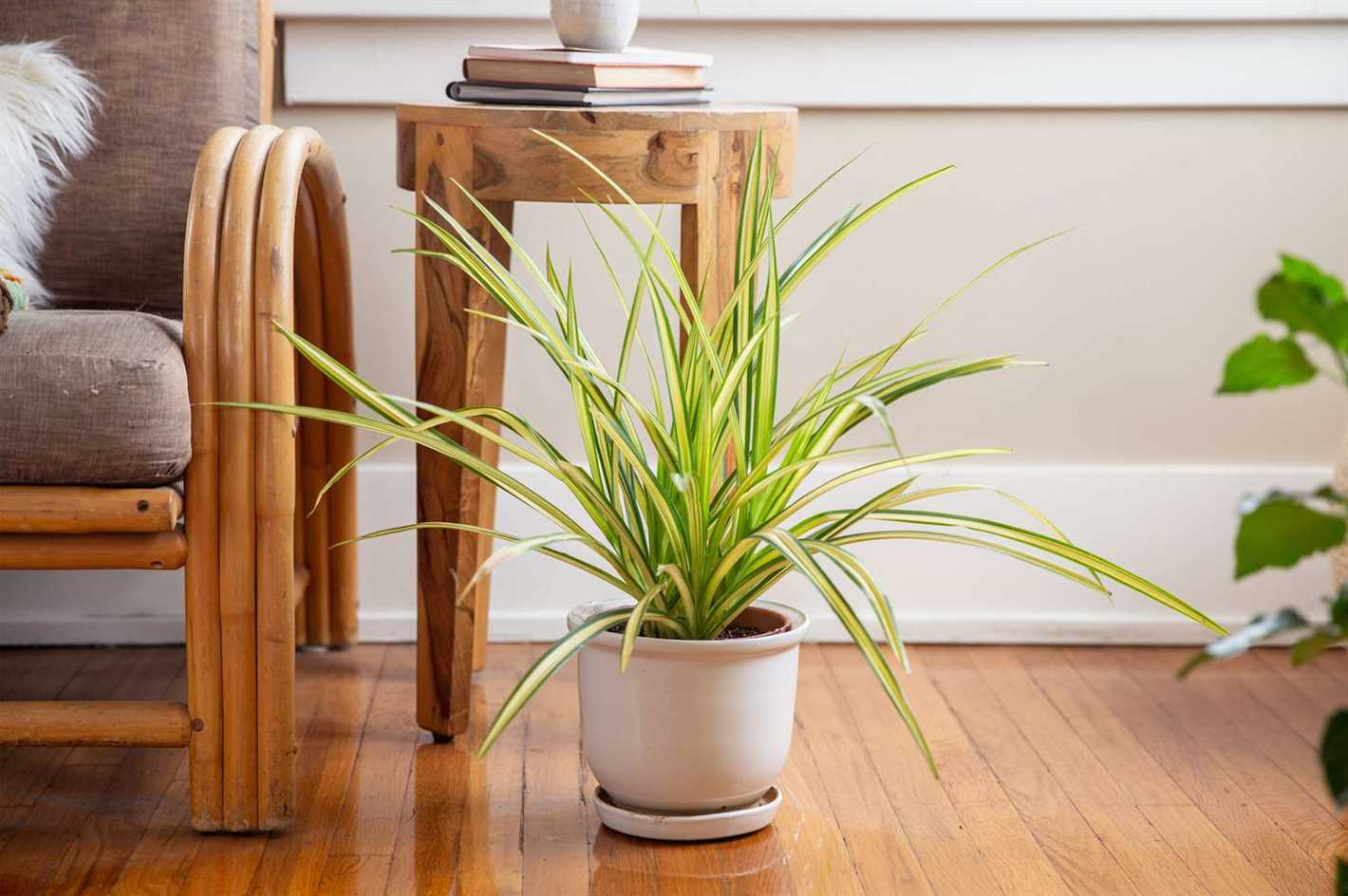
Pandanus plants prefer bright, indirect light. They can tolerate some direct sunlight, but too much can scorch their leaves. Place your pandanus plant near a window with filtered sunlight or provide it with artificial light if necessary.
Temperature
Pandanus plants thrive in temperatures between 65-80°F (18-27°C). They can tolerate slightly lower temperatures, but prolonged exposure to temperatures below 50°F (10°C) can damage the plant. Avoid placing your pandanus plant near cold drafts or air conditioning vents.
Watering
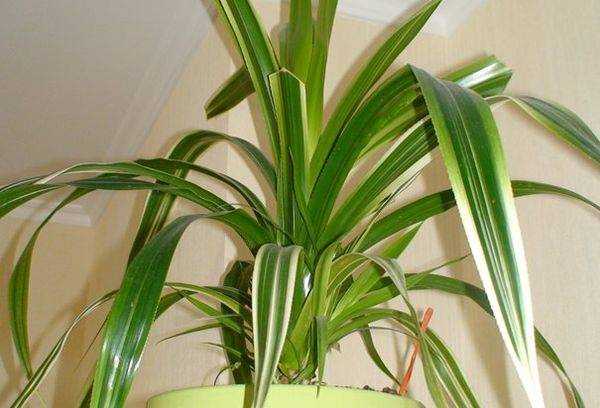
Water your pandanus plant when the top 1-2 inches (2.5-5 cm) of the soil feels dry. Avoid over-watering as it can lead to root rot. Ensure proper drainage by using well-draining soil and a pot with drainage holes.
Humidity
Pandanus plants prefer high humidity levels, around 50% or higher. Use a humidifier or place a tray filled with water near the plant to increase humidity. Mist the leaves occasionally, especially during dry winter months.
Fertilization
Feed your pandanus plant with a balanced fertilizer once a month during the growing season (spring and summer). Follow the instructions on the fertilizer packaging for proper dosage. Do not fertilize during the winter months.
Pruning
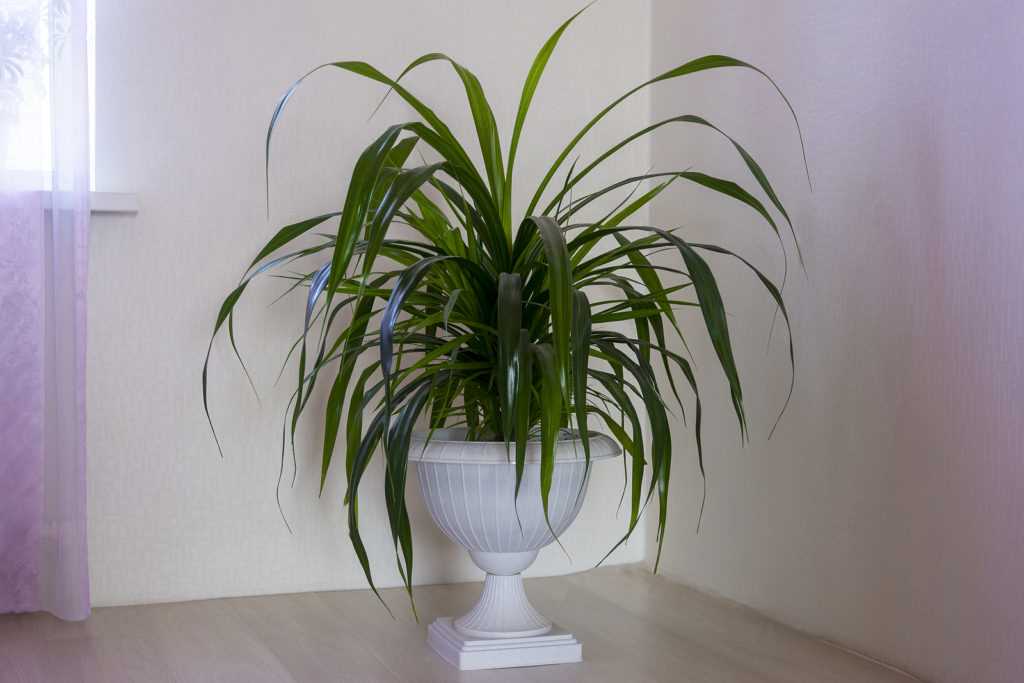
Pandanus plants do not require much pruning. Remove any dead or yellowing leaves as needed. You can also trim the plant to control its size and shape, but be careful not to remove too many leaves at once, as it can stress the plant.
Pests and Diseases
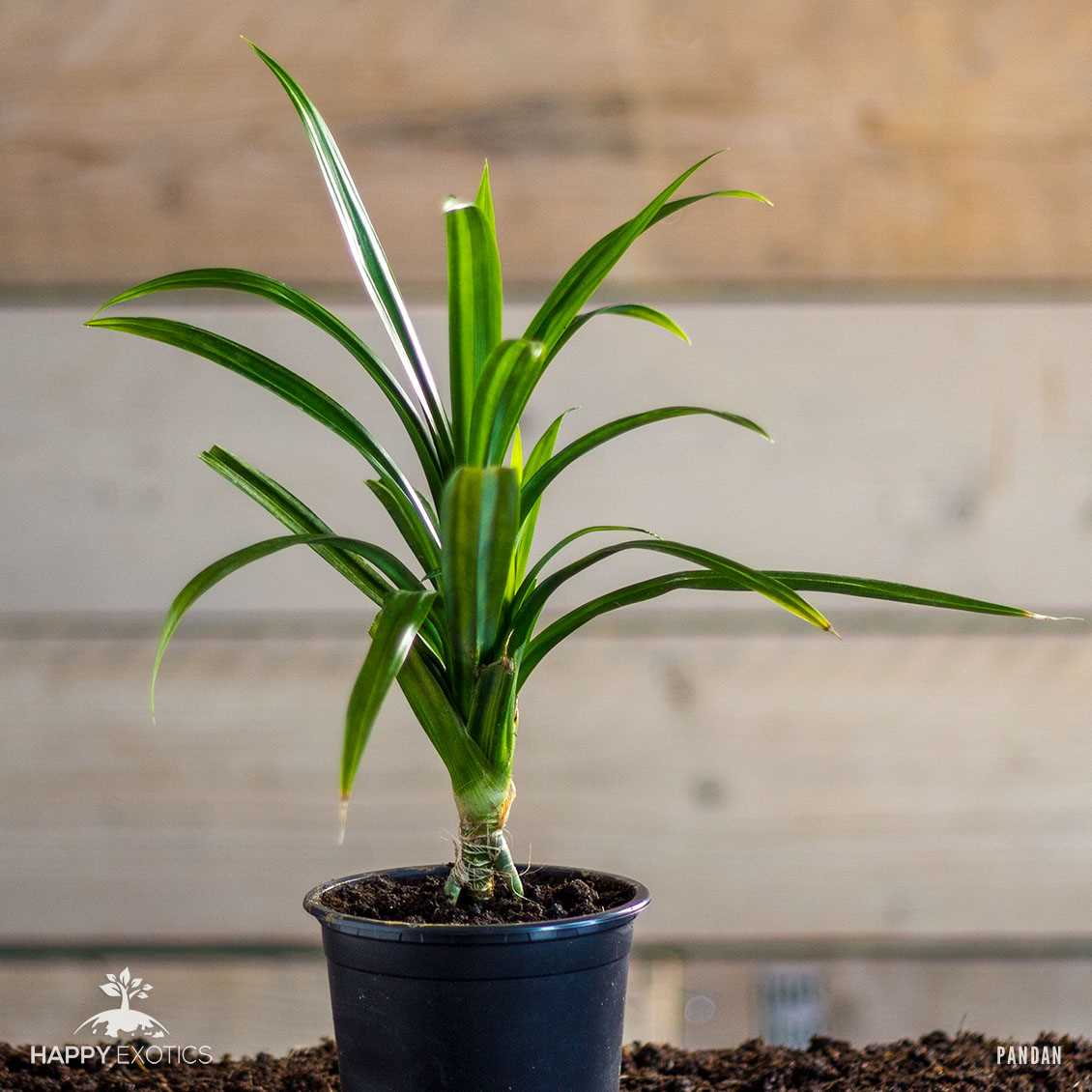
Pandanus plants are generally resistant to pests and diseases. However, they can occasionally suffer from mealybugs or scale insects. Inspect your plant regularly and treat any infestations with insecticidal soap or a mixture of water and mild dish soap.
Propagation
Pandanus plants can be propagated by taking stem cuttings. Select a healthy, mature stem and cut it just below a node. Remove the lower leaves and place the cutting in a container filled with moist soil. Keep the soil consistently moist and provide bright, indirect light. The cutting should root in a few weeks.
Pandanus Propagation Techniques
Pandanus plants can be propagated through various methods. Here are some common techniques:
1. Seed Propagation
One way to propagate Pandanus is through seeds. Collect mature seeds from a healthy Pandanus plant and soak them in warm water for a few hours. Sow the seeds in a well-draining potting mix, covering them lightly with soil. Keep the soil moist and place the pot in a warm, sunny location. The seeds will germinate in a few weeks.
2. Cutting Propagation
Another method of propagation is through stem cuttings. Select a healthy Pandanus plant and choose a young, green stem for cutting. Cut a 6-8 inch section from the tip of the stem, ensuring that it has at least 2-3 leaves. Remove the lower leaves and dip the cut end in a rooting hormone. Plant the cutting in a well-draining potting mix, keeping the soil moist. Place the pot in a warm and humid environment, and roots should develop within a few weeks.
3. Air Layering

Air layering is a technique used to propagate Pandanus plants with thick stems. Select a mature stem and make a small incision in the middle of the stem. Apply rooting hormone to the incision. Pack the incision with moist sphagnum moss and wrap it with plastic wrap. After a few weeks, roots will develop in the moss. Cut the stem below the roots and plant it in a pot with well-draining soil.
4. Offshoot Propagation
Pandanus plants also produce offshoots, known as suckers, which can be separated and grown into new plants. Wait for the offshoot to develop its own roots and leaves before separating it from the parent plant. Gently remove the offshoot from the parent and plant it in a separate pot with well-draining soil. Keep the soil moist and place the pot in a warm, sunny location.
5. Division
If your Pandanus plant has multiple stems growing closely together, they can be divided into separate plants. Carefully remove the plant from its container and separate the stems, ensuring that each division has its own roots. Plant each division in a separate pot with well-draining soil, and water them thoroughly.
| Propagation Method | Description |
|---|---|
| Seed Propagation | Collect and sow mature seeds. |
| Cutting Propagation | Take stem cuttings and plant them in soil. |
| Air Layering | Encourage roots to develop on a stem by wrapping it in moss. |
| Offshoot Propagation | Separate offshoots from the parent plant and plant them separately. |
| Division | Separate multiple stems into individual plants. |
Pandanus Species Overview
Pandanus, commonly known as screw pines, are a tropical plant genus that belongs to the family Pandanaceae. They are native to Asia, Australia, and the Pacific Islands and are known for their unique, spiral-shaped leaves and aerial roots. There are over 600 species of Pandanus, but in this article, we will focus on a few popular ones.
Pandanus utilis
Pandanus utilis, also known as the common screwpine or thatch screwpine, is a species native to Madagascar and the Mascarene Islands. It is a medium-sized tree that can reach heights of up to 20 meters. The leaves are long, narrow, and spirally arranged, giving the plant its characteristic appearance. Pandanus utilis is commonly used for thatching roofs, as well as in traditional medicine for various ailments.
Pandanus amaryllifolius
Pandanus amaryllifolius, also known as pandan leaf or fragrant screwpine, is a species native to Southeast Asia. It is a smaller plant, usually growing up to 2 meters tall. The leaves of Pandanus amaryllifolius are long and narrow with a pointed end and have a unique fragrance. They are often used in cooking, especially in Southeast Asian cuisine, to add flavor and aroma to dishes such as rice, desserts, and curries.
Pandanus tectorius
Pandanus tectorius, also known as hala tree or Tahitian screwpine, is a species native to the Pacific Islands. It is a large tree that can grow up to 15 meters tall. The leaves of Pandanus tectorius are long and have sharp spines along the edges. The tree is culturally significant in Polynesia, where its leaves are used for weaving mats, baskets, and other traditional crafts. The fruit of Pandanus tectorius is also edible and has a sweet, pineapple-like flavor.
Pandanus veitchii
Pandanus veitchii, also known as Veitch’s screw pine or dwarf screw pine, is a species native to Southeast Asia. It is a small shrub that typically grows up to 1 meter tall. The leaves of Pandanus veitchii are short and stout, with prominent spines along the edges. This species is popular as an ornamental plant due to its unique appearance and compact size. It is often grown in containers or as a border plant in gardens.
Pandanus candelabrum
Pandanus candelabrum, also known as candlestick pandanus, is a species native to Papua New Guinea and the Solomon Islands. It is a small tree that can reach heights of up to 6 meters. The leaves of Pandanus candelabrum are long and narrow and have prominent ridges. They are used in traditional medicine for their medicinal properties and are also harvested for their fiber, which is used in weaving.
| Species | Common Names | Native Region | Uses |
|---|---|---|---|
| Pandanus utilis | Common screwpine, thatch screwpine | Madagascar, Mascarene Islands | Thatching, traditional medicine |
| Pandanus amaryllifolius | Pandan leaf, fragrant screwpine | Southeast Asia | Cooking, flavoring |
| Pandanus tectorius | Hala tree, Tahitian screwpine | Pacific Islands | Weaving, edible fruit |
| Pandanus veitchii | Veitch’s screw pine, dwarf screw pine | Southeast Asia | Ornamental plant |
| Pandanus candelabrum | Candlestick pandanus | Papua New Guinea, Solomon Islands | Weaving, traditional medicine |
Tips for Pandanus Fertilizing
Pandanus plants, also known as screw pines, are tropical and subtropical plants that require proper fertilization for healthy growth. Here are some tips on how to fertilize your pandanus plant:
- Choose the right fertilizer: Use a balanced, slow-release fertilizer with an N-P-K ratio of 10-10-10 or 14-14-14. This will provide pandanus plants with the necessary nutrients for healthy growth.
- Fertilize during the growing season: Pandanus plants are actively growing during the spring and summer months. Fertilize your plant every two to four weeks during this time to support its growth.
- Water before fertilizing: Always water your pandanus plant thoroughly before applying fertilizer. This will help prevent root burn and ensure that the nutrients are properly absorbed.
- Apply the fertilizer evenly: Spread the fertilizer evenly around the base of the plant, keeping it away from the trunk. Avoid piling the fertilizer in one spot, as this can cause root damage.
- Use organic matter: Organic fertilizers, such as compost or well-rotted manure, can also be used to fertilize pandanus plants. These organic materials can improve soil fertility and provide slow-release nutrients to the plant.
- Monitor for signs of over-fertilization: Excessive fertilization can lead to salt buildup, burning of the roots, or stunted growth. If you notice yellowing leaves, brown tips, or other signs of stress, reduce the amount of fertilizer or flush the soil with water to leach out excess salts.
By following these tips, you can ensure that your pandanus plant gets the right amount of nutrients to thrive and stay healthy.
Pandanus: Ideal Light Conditions
Pandanus is a tropical plant that thrives in bright light conditions. It prefers to be placed in a location where it can receive direct sunlight for several hours a day, but it can also tolerate some shade.
If you are growing Pandanus indoors, it is best to place it near a window where it can get plenty of bright, indirect light. Avoid placing it in a spot where it will receive direct sunlight for extended periods, as this can lead to leaf burn.
Pandanus can also be grown outdoors in warm, tropical climates. In these conditions, it is best to place the plant in a location that receives bright, filtered light. This can be achieved by planting it under the canopy of larger trees or placing it in a spot where it will receive some shade during the hottest part of the day.
It is important to note that excessive exposure to direct sunlight can cause the leaves of Pandanus to turn yellow or brown and can stunt its growth. On the other hand, insufficient light can result in weak, leggy growth and a lack of flowering.
In summary, Pandanus prefers bright, indirect light and can tolerate some shade. Whether you are growing it indoors or outdoors, make sure to provide it with the ideal light conditions to promote healthy growth and development.
Pandanus: Watering Needs
Pandanus plants have specific watering needs to ensure their health and proper growth. Here are some important points to consider when watering your Pandanus:
1. Water Frequency
Pandanus plants should be watered regularly but not too frequently. It is best to allow the top inch of soil to dry out between waterings. Overwatering can lead to root rot and other issues, so it’s important to find the right balance.
2. Watering Methods
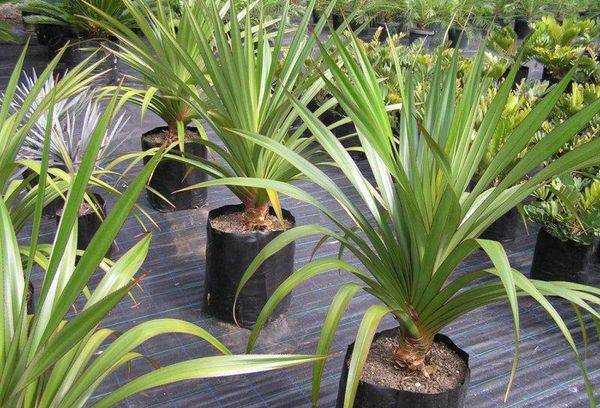
You can water your Pandanus from above or below. Pour water evenly over the soil until it begins to drain from the bottom of the pot. Alternatively, you can place the pot in a shallow tray filled with water and allow the plant to absorb moisture through the drainage holes. Make sure to empty the tray after a few minutes to avoid waterlogging.
3. Water Quality
Pandanus plants prefer slightly acidic to neutral water. If your tap water is too alkaline, you can use filtered or rainwater instead. Avoid using water that has been treated with water softeners, as it may contain high levels of salts that can be harmful to the plant.
4. Adjusting Watering in Different Seasons
During the growing season, which is typically spring and summer, Pandanus plants may require more frequent watering. However, in the dormant season, usually autumn and winter, you should reduce watering to prevent waterlogged soil.
5. Signs of Overwatering and Underwatering
It’s important to pay attention to signs that indicate whether your Pandanus is receiving too much or too little water. Overwatering can cause the leaves to turn yellow or brown and the roots to rot. Underwatering, on the other hand, may result in wilting, dry or crispy leaves. Adjust your watering schedule accordingly if you notice any of these signs.
By following these watering guidelines, you can ensure that your Pandanus plant remains healthy and thrives in your home or garden.
Common Pandanus Pests and Diseases
Pests
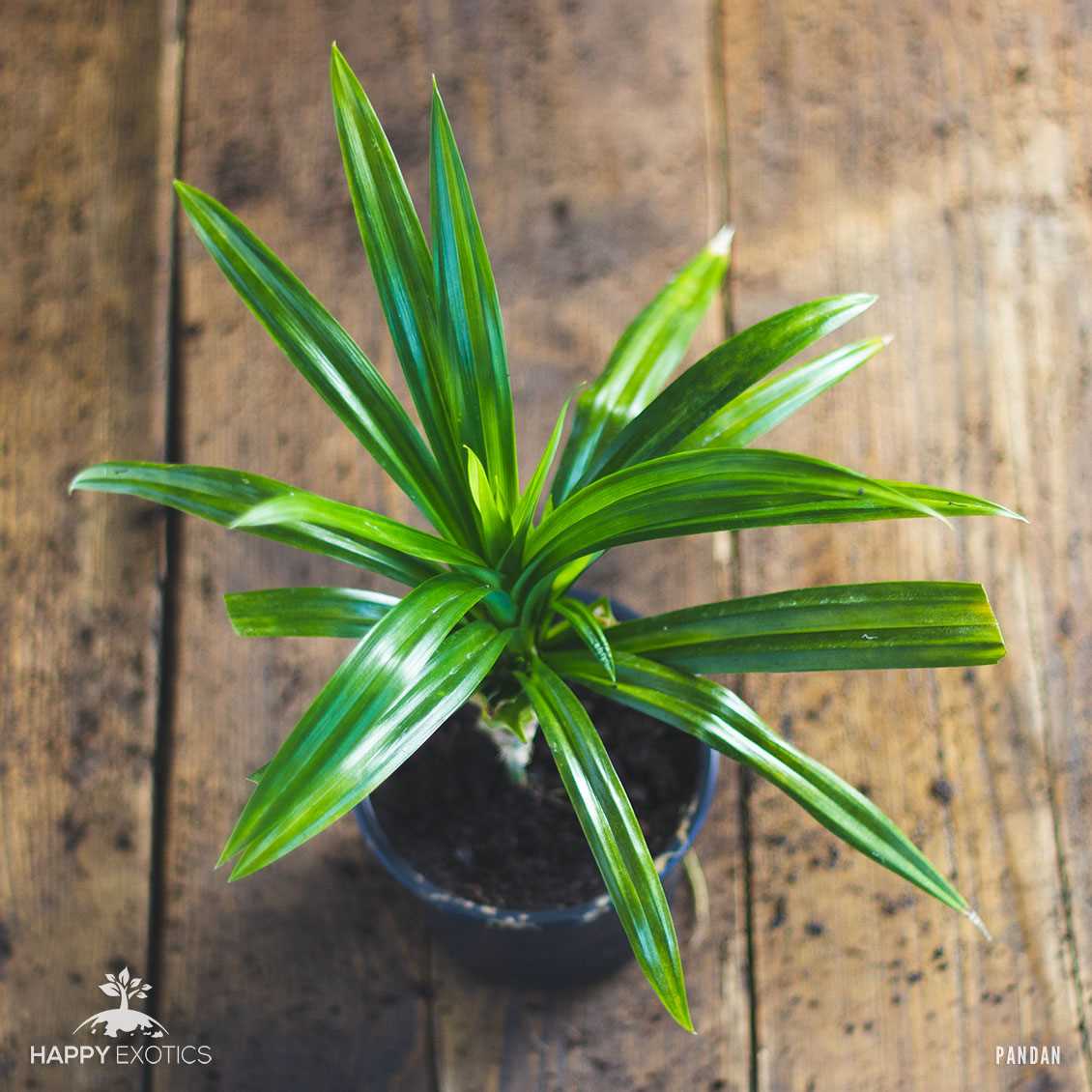
- Pandanus mite (Tenuipalpus sp.): These tiny pests are commonly found on the underside of pandanus leaves. They feed on the plant sap, causing yellowing and distortion of the leaves. Regularly check the leaves and wash them with water or use an appropriate insecticide if an infestation is observed.
- Pandanus scale (Aulacaspis yasumatsui): These small, flat insects usually appear as white or grayish-brown bumps on the leaves. They suck the sap, leading to leaf yellowing and stunted growth. Use a soft brush or a solution of water and dish soap to remove them. In severe cases, consider using horticultural oil or insecticidal soap.
- Mealybugs (Pseudococcidae family): Mealybugs are small, soft-bodied insects that feed on plant sap. They are usually found in clusters on the undersides of leaves or in leaf axils. To control them, remove them manually or use a cotton swab dipped in alcohol to wipe them off. In severe cases, use insecticidal soap or neem oil.
- Caterpillars (Lepidoptera order): These larvae feed on the leaves of pandanus, causing extensive damage. Handpick caterpillars or use biological insecticides like Bacillus thuringiensis (BT) to control their population.
Diseases
- Leaf spot diseases: Various fungal pathogens can cause leaf spot diseases on pandanus. Symptoms include brown or black spots on the leaves, which may eventually lead to leaf drop. To manage leaf spot diseases, remove and destroy infected leaves, and avoid overhead watering or excessive humidity.
- Root rot (Phytophthora sp.): This fungal disease affects the roots of pandanus, leading to root decay and stunted growth. Overwatering and poor drainage can contribute to root rot. To prevent root rot, ensure well-draining soil and avoid overwatering.
- Pandanus webworm (Lecithoceridae family): These small moths lay their eggs on pandanus leaves, and the resulting webworm larvae feed on the leaves, causing damage. Removing infested leaves and practicing good sanitation can help control the population of these pests.
- Nematodes: Nematodes are microscopic roundworms that can cause root damage and stunt the growth of pandanus. Infected plants may show signs of wilting, yellowing, and poor growth. Prevent nematode infestations by using disease-free planting material and maintaining healthy soil conditions.
Regular inspection and prompt intervention are crucial for managing pests and diseases in pandanus plants. Maintaining optimal growing conditions, such as proper watering, good drainage, and providing adequate sunlight, can help in preventing these problems.
Pandanus: Pruning and Repotting
Pruning
Pandanus plants, also known as screw pines, generally do not require much pruning. However, if your plant starts to grow too large or becomes leggy, you may want to consider pruning it back to maintain its shape and size.
To prune a pandanus plant, start by removing any dead or yellowing leaves. Use clean, sharp shears or scissors to make clean cuts just above where the leaf attaches to the stem.
If you want to reduce the overall size of the plant, you can also trim back the top growth. Make sure to cut just above a leaf node to encourage new growth from that point.
Repotting
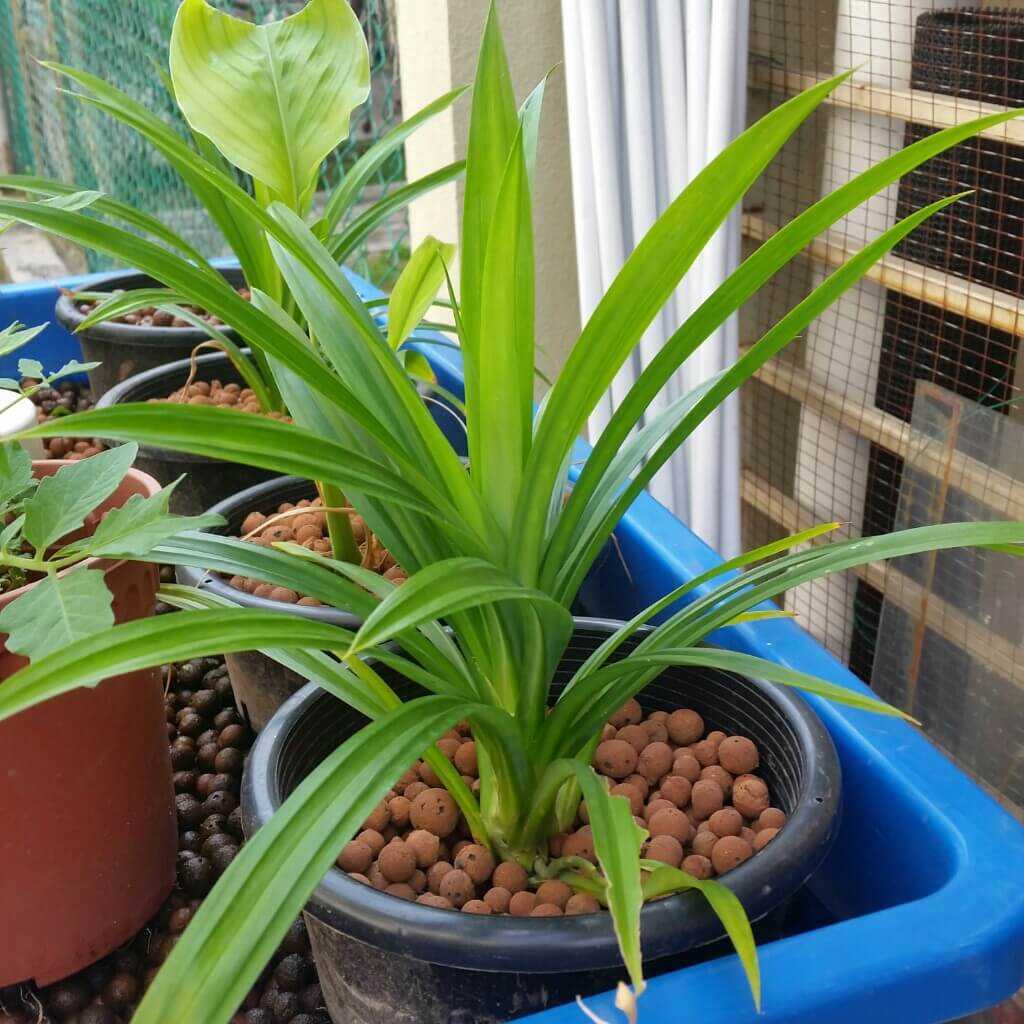
Pandanus plants generally prefer to be slightly root-bound, so you don’t need to repot them very often. However, if the roots are completely filling the pot or if the plant is not thriving, it may be time to repot.
Choose a pot that is only slightly larger than the current one to avoid overpotting. Use a well-draining potting mix, such as a mix of peat moss, perlite, and sand.
Carefully remove the plant from its current pot, being mindful of the sharp spines on the leaves. Gently loosen the roots and place the plant in the new pot, adding fresh potting mix around it. Press the soil lightly to firm it up and water the plant thoroughly.
After repotting, place the plant in a bright location, but avoid direct sunlight. Water it regularly, allowing the top inch of soil to dry out between waterings.
Q&A:
How do I take care of Pandanus plants at home?
To take care of Pandanus plants at home, you should place them in a bright location with indirect sunlight and water them regularly. Keep the soil moist but not soggy and avoid overwatering. These plants prefer humidity, so misting them with water can help. Fertilize them every 2-3 months and trim any yellow or brown leaves to maintain its appearance.
Can I propagate Pandanus plants at home?
Yes, you can propagate Pandanus plants at home. The easiest method is by dividing the plant. Carefully remove the plant from its pot and divide the root ball into sections, ensuring each section has roots and leaves. Repot each section in a separate pot with fresh soil and water them well. You can also propagate Pandanus plants from stem cuttings. Cut a stem with several leaves and place it in a well-draining potting mix. Keep the soil moist and place the cutting in a warm, bright spot. Roots should develop in a few weeks.
What species of Pandanus are commonly grown as houseplants?
Some species of Pandanus that are commonly grown as houseplants include Pandanus veitchii, Pandanus utilis, and Pandanus amaryllifolius. Pandanus veitchii, also known as the screw pine, has long, arching leaves with interesting spiral patterns. Pandanus utilis, or the common screwpine, has long, sword-shaped leaves and is extremely hardy. Pandanus amaryllifolius, commonly known as pandan, has narrow, strap-like leaves and is often used in cooking.
How often should I water my Pandanus plants?
Pandanus plants should be watered regularly, but the frequency depends on factors such as the size of the plant, the size of the pot, and the environment. As a general rule, water your Pandanus plants when the top inch of soil feels dry to the touch. Be careful not to overwater them, as this can lead to root rot. It’s better to underwater than overwater these plants.
Are Pandanus plants toxic to pets?
According to the ASPCA, Pandanus plants are non-toxic to cats and dogs. This makes them a safe choice for pet owners. However, it’s always a good idea to monitor your pets and prevent them from chewing on the leaves or ingesting any part of the plant, as some animals may have individual sensitivities or allergies.
Video:
Pandanus care and propagation|Bushy pandanus tips|Pandanus Guide







